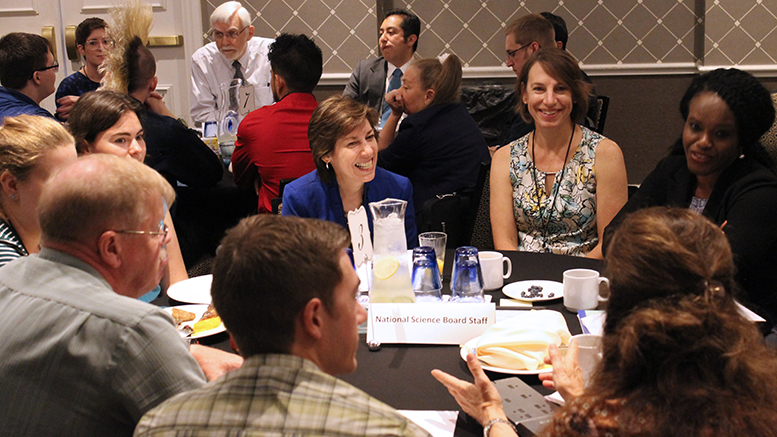The U.S. needs to embrace postsecondary career and technical education (CTE) to create a robust pipeline for science and engineering jobs beyond those that require a baccalaureate — something that hasn’t been happening, according to a new report.
Trade and technical jobs and CTE continue to face a stigma in terms of families’ views of what a college education should be, which is leading to a shortage of electricians, welders, programmers and more, says the report from the National Science Board (NSB), which establishes the policies of the National Science Foundation (NSF) and serves as advisor to Congress and the president.
Too often, the public doesn’t know that a skilled technician workforce is critical to industries focused on science, technology, engineering and math (STEM), the report says.
“It’s in the nation’s interest that all Americans, including the two in three U.S. adults who do not have a bachelor’s degree, have the opportunity to participate in and benefit from our scientific and technological progress,” it says.
There’s an economic reason to ensure that the U.S. has a skilled technician workforce: they account for more than half of all workers in many of America’s advanced industries, such as advanced manufacturing, pharmaceuticals, automotive, aerospace, energy, cybersecurity, telecommunications and software design, to name a new, the report says.
“Many know NSF’s mission to advance the progress of all fields of science and engineering,” NSF Director France Cordova says in a press release. “They may be less familiar with the agency’s mandate to prepare the STEM workforce of the future, including the skilled technician workforce.”
Students don’t know what they don’t know
NSB gathered comments on the challenges and promising practices surrounding CTE and technical jobs through a task force, which engaged stakeholders such as the American Association of Community Colleges (AACC), several federal agencies and other organizations. It also held a “listening tour” that included visits to three community colleges and two events — the Community College Innovation Challenge and the Advanced Technological Education Principal Investigators’ Conference, which are both NSF-funded and managed by AACC.
Many students who attended the listening meetings told the task force that they and their families lacked information and awareness of technical careers, which feed misperceptions and helped to discourage students from pursuing technical education and jobs, the report says. Their high schools often didn’t present such careers and CTE as an option.
“As a result, a number of students described finding their preferred career opportunity required technical education after having begun or completed a four-year degree,” the report says.
Despite these challenges, some recent efforts are trying to make inroads. The report notes work-based learning, such as registered and nonregistered apprenticeships, are becoming more popular, and organizations such as the American School Counselors Association are speaking more about career readiness and are developing awareness about trade and technical careers. Some high schools are even re-integrating CTE into their offerings for all students.
Meeting students where they are
The task force also heard about the challenges that working parents face when it comes to going to college. “For many of the students with whom we met, leaving the workforce for one or two years — or even a few months — to complete a degree or participate in a research opportunity or internship was a nonstarter,” the report says.
Students and faculty stressed to the task force the importance of designing programs with flexible schedules and providing opportunities to “earn while you learn” through apprenticeships and other work-based programs, the report says. The panel also heard about the need for wraparound services that include transportation and child care.
“Such services made the difference between students staying in or leaving the program,” it adds.
Help from employers
Employers also have a part in broadening career opportunities for technicians. Companies often have internal barriers that keep such workers from applying for jobs for which they would qualify. For example, companies often mandate a baccalaureate for a position that doesn’t require one.
The report also includes examples of successful partnerships that businesses have formed with community colleges. One is between Indian River State College in Florida and the nuclear energy sector. The college worked with industry officials to determine what math skills were needs for technician careers in the field, and then it revamped the math curriculum for its nuclear technology program. The report also highlights efforts by the Center for Advanced Automotive Technology, an NSF-funded program housed at Macomb Community College in Michigan, which worked with industry to create a new interdisciplinary degree program in vehicle development.
Lack of data continues
The report also focuses on the use of data to help promote technical jobs, from accessing supply-and-demand information pertaining to skilled technicians, to using information to create education programs and recruitment campaigns. Industry, education sectors and policymakers have tried to make improvements in this area, but data remain limited or siloed, the report says.
The report highlights NSB’s efforts to ensure a more coordinated federal approach to data by working more closely with federal agencies such as the U.S. Census Bureau and sharing more data in its reports.

